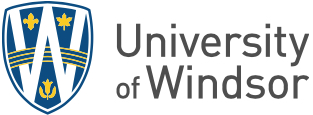Editor’s note: This is one in a series of articles about students who were involved in cool research, scholarly and creative activities during their summer break from classes.
Whenever Stephan Pigeon starts a new course, he likes to walk in to the classroom and quietly size up who he’ll be competing with for the top marks that semester. Evan Suntres was the guy he figured he’d be academically duking it out with when he signed up for a graduate level history course with professor Guy Lazure.
“I really didn’t think we’d get along when I first met him,” said Pigeon. “I figured we’d be knocking heads.”
So it came as a bit of a surprise when after just a few weeks of being in the master’s program, Suntres became one of his best friends. It’s a relationship that was further cemented by a research trip the two history majors took this spring to Palma de Mallorca, an island off the Mediterranean coast of Spain.
Dr. Lazure invited the students to spend several weeks working in the library of the Foundation Bartolome March, a wealthy Mallorcan collector of art and rare books who died in the early 1990s. The students helped catalogue a collection of almost 1,700 early printed books, hoping to find some of the nearly 12,000 volumes that had once belonged to a 16th-century learned ecclesiastic from Seville named Luciano de Negrón.
The books eventually came in to the possession of the Duke of Alcalá, a rich local aristocrat. They stayed in his family until the 1960s when his descendant, the Duke of Medinaceli, sold the collection to March. The students managed to trace and identify some of the books that came from the Negrón-Alcalá collection.
For two students who love old books, just to be among some that dated back to before Guttenberg’s printing press was a once in a lifetime opportunity.
“To sit down and hold the physical object, to see how it’s bound and stitched together, how they feel, how they smell, looking at these bright inks and gold-leaf pages … ,” said Pigeon. “It’s an artifact. I was like a kid in a candy store.”
Pigeon said the books were everything from small pieces to monstrous tomes, and the students were tasked with looking for those that had ownership plates, which they would photograph, while making note of titles, author, place and year of publication.
“We were just trying to trace how these books went from one person to the next,” he said. “At the end of our trip, all of our data went back to the library.”
One of the most fascinating features of the books, they said, was copious marginalia they contained—drawings, sketches, notes, and remarks that the owners had made in them.
“It really gave you a sense of what the owners were thinking about the material as they read it,” Pigeon said.
Suntres, who is doing his master’s work on how certain social upheavals in the 1960s and 1970s affected the way conservative males expressed their masculinity, said he enjoyed getting a sense of what’s required to be an academic historian.
“It was a real eye-opener,” he said. “The trip was just a huge indication of what’s possible in this field.”
Besides doing their archival work, the two students got to spend a lot of time enjoying the sites around the island. Suntres rented a motorcycle and went exploring for several days, and they both took a couple of days to travel to Barcelona.
Both students say they are interested in pursuing careers as academic historians.


